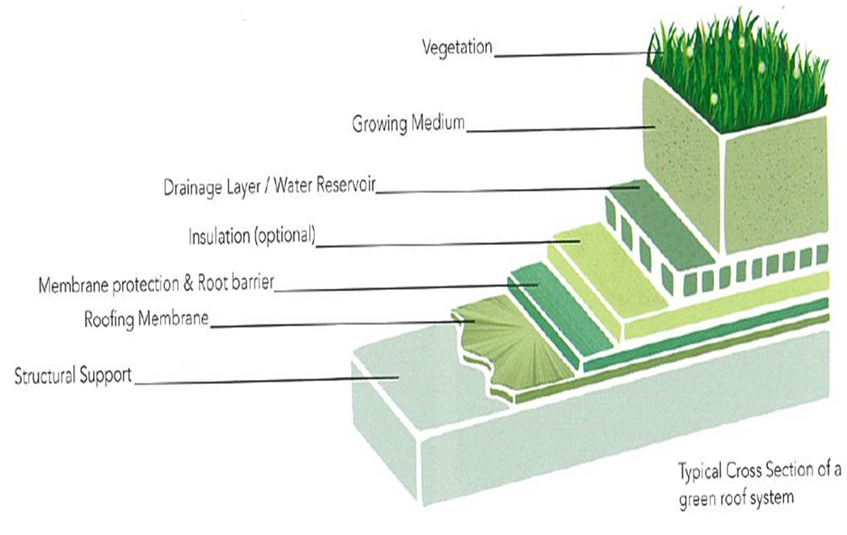Rooftop Greenery - The Horizontal Dimension
Rooftop greenery refers to the greening of rooftop surfaces. When appropriately designed, rooftop greenery can significantly improve building performance, which includes:
- Improved air quality
- Better acoustic insulation
- Enhanced durability of water-proof barriers
- Reduced urban heat island effect
- Improved rainwater retention
- Increased energy efficiency
There are two main categories of rooftop greenery ranging from a simple green roof (extensive rooftop greenery) to an elaborate roof garden (intensive rooftop greenery). However, in recent years, many hybrid forms of rooftop greenery can be seen emerging throughout the island.
Green Roof (extensive rooftop greenery)
A green roof involves the extensive greening of rooftop surfaces. It is typically not designed for public access or recreational use, and access is strictly for periodic maintenance. With a thinner vegetation support layer, green roofs are lightweight compared to roof gardens. As such, extensive green roofs are only able to support a limited range of vegetation species. Drought-tolerant vegetation species with shallow root systems are most ideal.
Green roofs have the potential to value-add to an existing or new building as it provides multiple benefits to the building with minimal maintenance. Some of these benefits include reducing the building’s cooling load, protecting the building facade from harsh elements, and providing acoustic insulation.
Roof Garden (intensive rooftop greenery)
A roof garden is usually designed to be accessible to the public. It is often utilised as a communal rooftop space for recreational purposes. Compared to a simple green roof, the design and layout of a roof garden is more elaborate with the inclusion of pathways, lighting fixtures, and benches. The depth of vegetation support medium is also deeper and varied to support a diverse range of vegetation species from groundcovers, shrubs, to small trees. With potentially deeper soil depths, roof gardens are generally heavier than green roofs. Hence, it is critical to assess the loading capacity of the rooftop before implementation to ensure that it is able to support increased overall loads. The wider use of landscaping materials and vegetation species also mean that roof gardens would require more regular and frequent maintenance than green roofs.
Components of the Green Roof System
There are five basic components to a green roof system:
- Plants layer
- Substrates and media layer
- Filter layer
- Drainage and storage cells layer
- Protection membrane and root barrier layer

Though there are different systems and technology used in the industry, all of them are based on the same component principles. These systems are designed differently in order to meet various site conditions and needs.
The green roof system of an intensive rooftop garden needs a more substantial depth of the substrate/ soil media layer to accommodate the healthy growth of a wider variety of plant groups, as compared to a simple extensive green roof.
Plant Selection
Plants chosen for rooftop greenery should typically be able to thrive in drier rooftop conditions, withstand intense sunlight, and tolerate low soil moisture.
The selection of plants will depend on the following:
-
Design objectives (attract biodiversity, improve aesthetics, support native plants, etc.)
-
Budget
-
Environmental factors
-
Depth of the substrate
-
Expected level of maintenance
Plant selection for green roofs is limited to vegetation species that are able to grow in shallow substrates such as groundcover and shrubs.
Plant selection for roof gardens is much broader than that of green roofs, ranging from ground covers to small trees. The placement of bulkier landscape components such as small trees should consider the efficient transfer of the load throughout the building structures and other safety issues.
Click here for a recommended list of plants for green roofs.